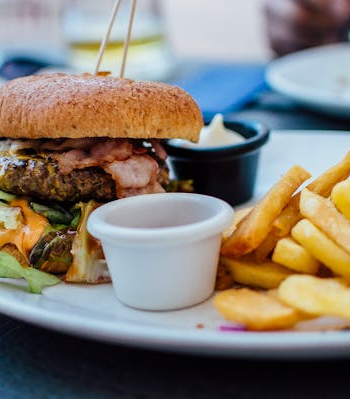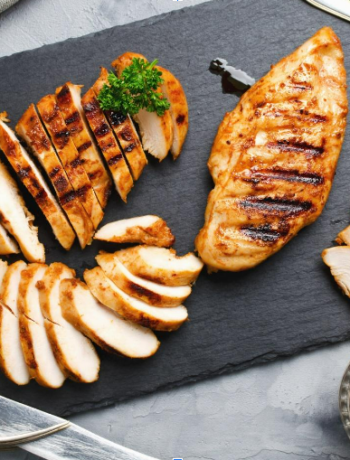The idea that you can consume flowers may seem unusual to some people. But actually, the use of edible flowers is centuries old. They resemble herbs and can give your baked products a nice (and occasionally earthy) taste and scent.
According to Thanks A Bunch Florist, one flower that works particularly well with baked products and has a wonderful perfume is the tiny marigold. It pairs well with sweets that have an orange flavour since it has a pleasant orange smell and a little citrus flavour.
The fundamentals of dealing with edible florals and other botanicals will be discussed. There are a few guidelines to follow to make sure the florals they are using are fully safe and fit to eat, even though the ultimate objective is to encourage you to be creative and also have fun in your arrangements.
Understanding Edible Flowers
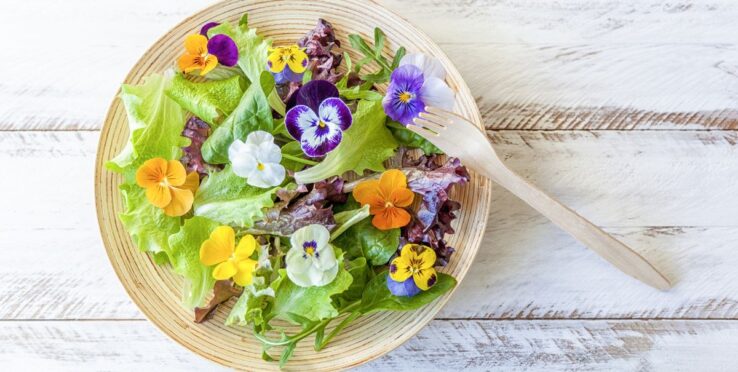
Source: thepioneerwoman.com
Blossoms that may be safely consumed by humans and utilised in a variety of meals, such as baking and sweets, are known as edible blooms. However, not all blossoms are fit to consume, so it’s important to understand which ones are and which ones are not. When ingested, some blossoms might trigger allergic reactions or other health issues.
There are certain crucial considerations to make when utilising edible flowers in baking and sweets. It’s important to either grow your own blooms or purchase them from a trusted vendor. Floras that have been handled with chemicals or other chemicals should not be used since they might be damaging to your health.
Second, even if your flowers are organic, you should always wash them properly before using them. This will assist in getting rid of any dirt, bugs, or other impurities that could be on the floret.
Thirdly, because other flower parts might not be suitable for eating, it is crucial to just use the sepals of the flowers. Before using the blossoms in your baking or pastries, remove the stems and pistils.
Finally, it’s crucial to be aware of any allergies or sensitivities to particular floras that you or your visitors may have. It’s important to use precaution and speak with a doctor if you have any questions because some people can be allergic to particular flowers.
Choosing and Preparing Edible Flowers

Source: gardeningetc.com
It’s a good idea to breathe new life into the kitchen as the chilly months approach. To add flavour to any dish, use this guide on choosing and cooking blossoms.
Understanding flowers
While foraging for blooms, be sure to accurately identify the species before deciding whether to use it in your cooking. Not all blooms are safe to eat, while others have unpleasant tastes as well as the potential to harm one’s health if consumed. While looking for edible buds, bring a flower identification guide with you. When selecting whether to cook with a specific flower, consult it.
Verify if the petals, stalks, and leaves match the profile of the flower in your handbook. Although the leaf form or petal makeup of many flowers is identical, there are very few variations. If you know someone with expertise in cooking with blossoms, ask them if you may join them when they collect their upcoming bunch of flowerets.
Understanding the source
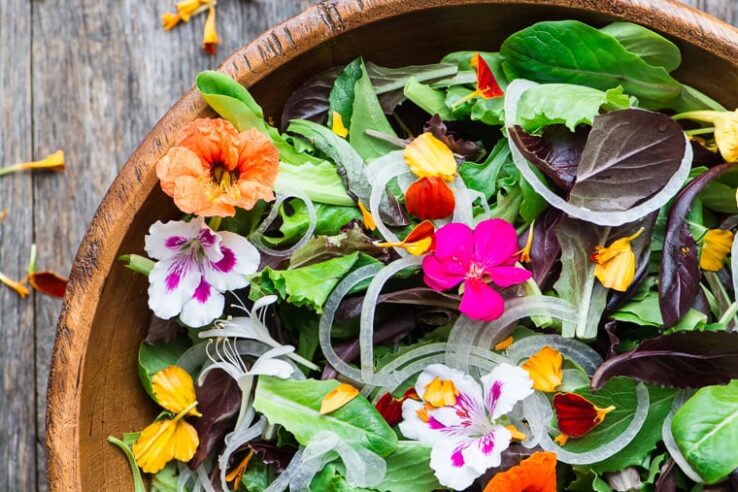
Source: theviewfromgreatisland.com
When cultivating their crops, some farmers use insecticides and fertilisers. The majority of blooms you may buy at a supermarket or florist are not appropriate for human consumption. Ask the florist or shop manager if you may use the blossoms in your meal even though they’re not marked “edible” appropriately. Make sure you are aware of who cultivated the flowers and where they came from.
Try to find farmers who don’t use chemicals such as pesticides because they can significantly alter how consumable and delicate the products are. Go to the farmers market in your area to meet with a producer in person. The market’s merchants are likely to be either farmers or those who collaborate with farmers who are knowledgeable about their products.
Properly harvest the blooms.
Put the blossoms in a vase filled with water to keep them there temporarily. The blooms should be submerged in water to remove any dirt or bugs before utilising them. After they have dried, rub them. If you plan to use the entire bloom, cut it at the point where the stem and flower base converge. Many students studying baking and pastry arts just use the petals. To do this, carefully remove the petals from the bud using clean, dry fingertips. They can also be minced into little bits.
Using Edible Flowers in Baking
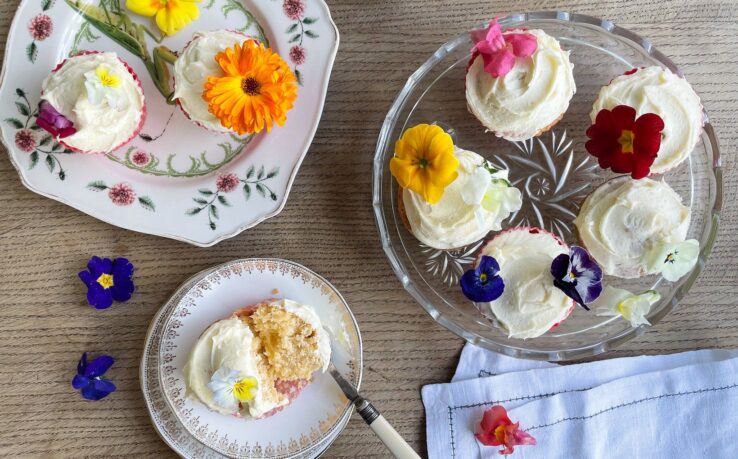
Source: finefoodspecialist.co.uk
Edible blossoms may lend a lovely and distinctive touch to your baked goods while also offering some extra health advantages. The following are some recipes that include edible flowers:
- Cake and cupcake decoration: To add a lovely and opulent touch, top off cakes and cupcakes with flowers. Also, you may use florets to decorate the edges of your cake with a flowery pattern.
- Add florals to batters and doughs: To enhance the flavour and appearance of your baked products, add edible blooms to cakes, cookies, and pastry batters.
- Making flower syrups and glazes: To make flower syrups and glazes, combine sugar, water, or cream with edible flowers. Utilise these syrups and glazes to give your sweets taste and sweetness.
- Prepare a floral infusion by steeping safe to eat blooms in cream or milk. Use the infused liquid to impart a flowery taste and scent to your baking recipes.
- Create flower butters and spreads: To make a floral margarine or spread that can be spread on toast, waffles, or baked goods, combine edible flora with melted butter or cream cheese.
Roses, violets, chamomile, and calendula are a few common delectable blossoms used in baking. To maintain their safety and flavour while using edible blooms in cooking, ensure that you comply with the recommended preparation and storage procedures.
Using Edible Flowers in the Desert
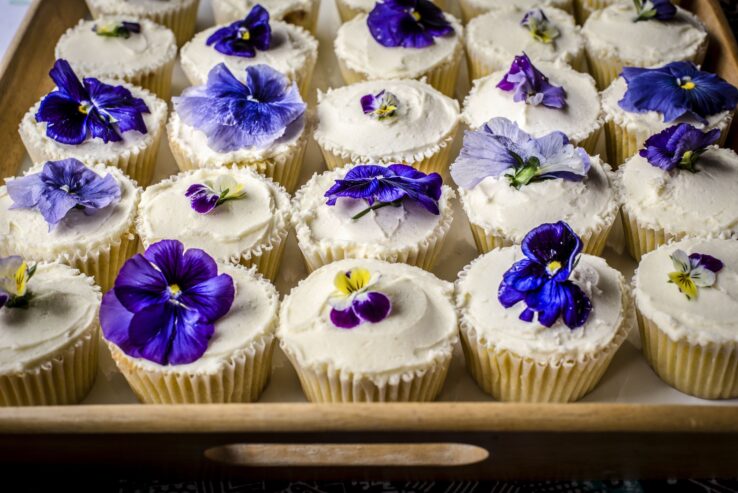
Source: countryliving.com
It might be a lovely and unexpected touch to your sweet dishes to use edible flowers in desserts. These are several sweets that use blossoms:
- Fruit salads may be garnished by adding edible florets for beauty and flavour. Colours, lavender, and roses are examples of consumable flowers that go well with fruit’s sweetness.
- Create floral ice creams and sorbets by infusing cream or milk with edible blooms before using the ice cream or sorbet the liquid has produced. This works well with edible flowers like chamomile, lavender, and elderflower.
- Usage as a cheesecake topping: Decorate your cheesecake with edible blossoms for a lovely and mouthwatering finishing touch. It works great with roses, pansies, and nasturtiums.
- Create flowery panna cottas and jellies by using flowerets to give the desserts a floral taste. Popular options include panna cottas and jellies made of rose, violet, and elderflower.
- Add to chocolate truffles: For a special and lovely touch, include crushed edible roses in the chocolate filling of chocolate truffles. Blooms from the hibiscus, rose, and lavender families go nicely with chocolate.
When using blossoms in sweets, just like when baking, make sure to pick blossoms that are safe to eat and to prepare and preserve them correctly. With these suggestions, you can use flowers to decorate dishes in a lovely and tasty way.
Conclusion
Finally, adding taste, texture, and aesthetic appeal to your food is a unique and creative method to use delectable flowers in baking and pastries. To prevent any negative effects, it’s crucial to pick the proper flowers and utilise them in the right amount.
There are plenty of other possibilities to choose from, but some common edible blossoms are roses, lavender, chamomile, violets, and elderflowers. You may use flora to flavour syrups, make floral butter, adorn cakes and pastries, or even bake them right into them when making sweets with flowers. Edible flowerets can take your treats to a whole new level with a little experimenting and ingenuity.


